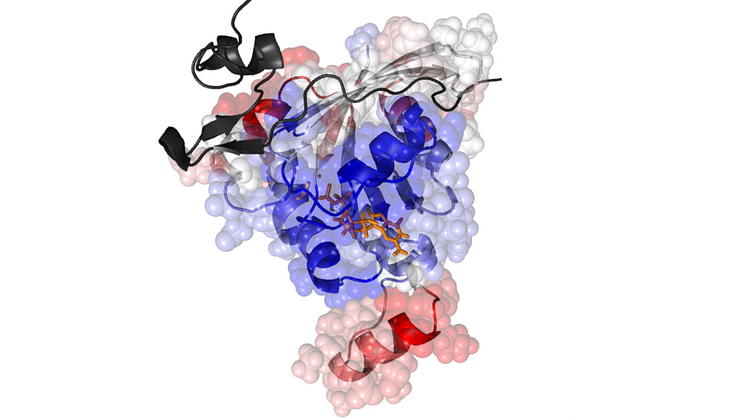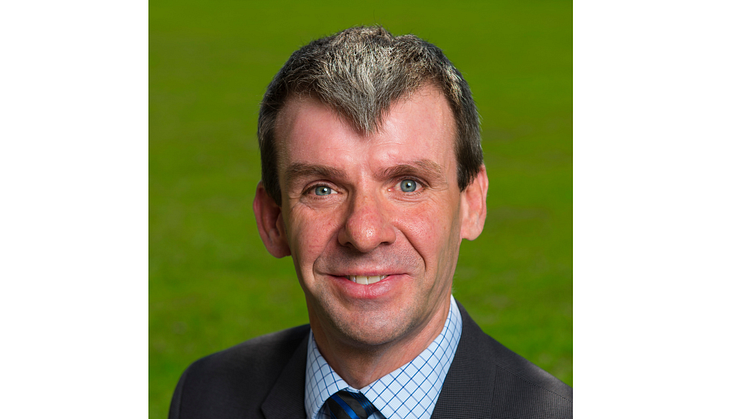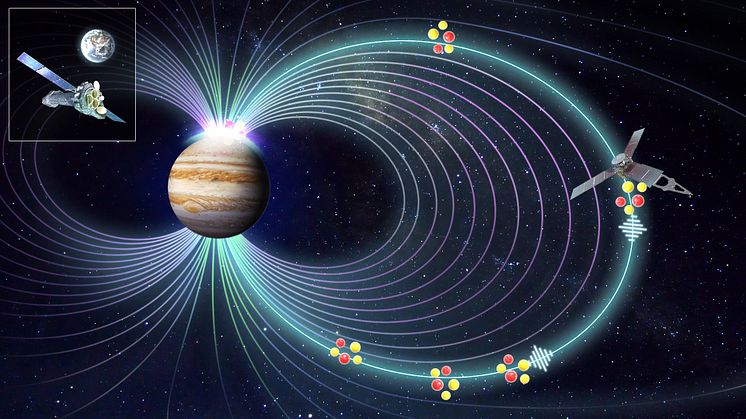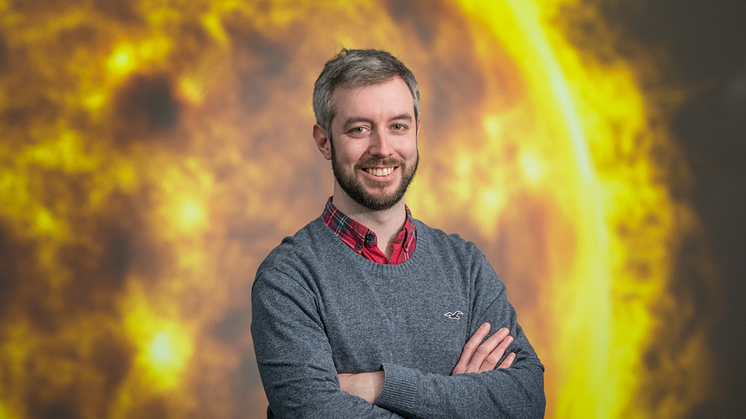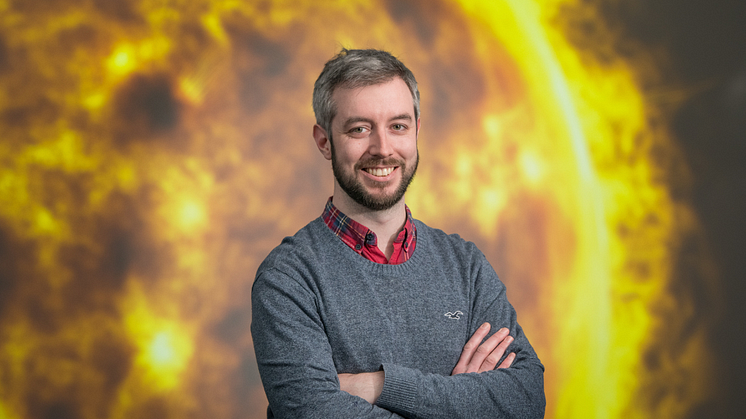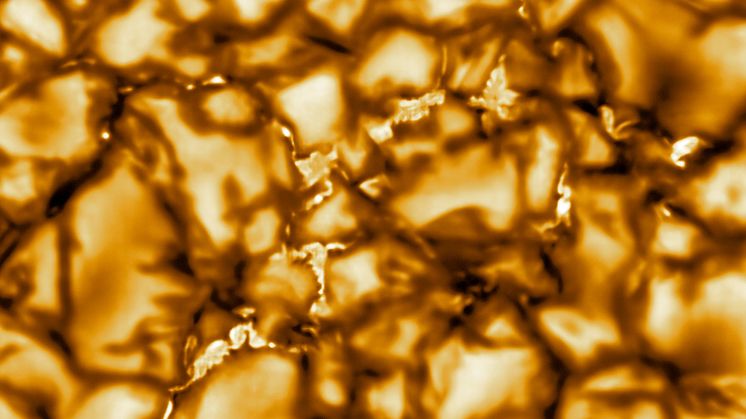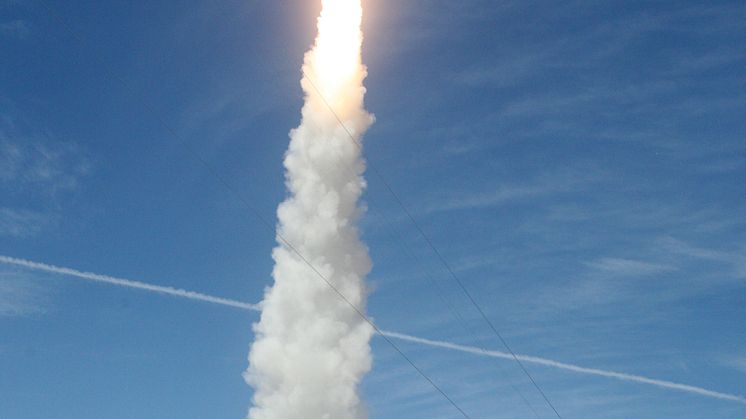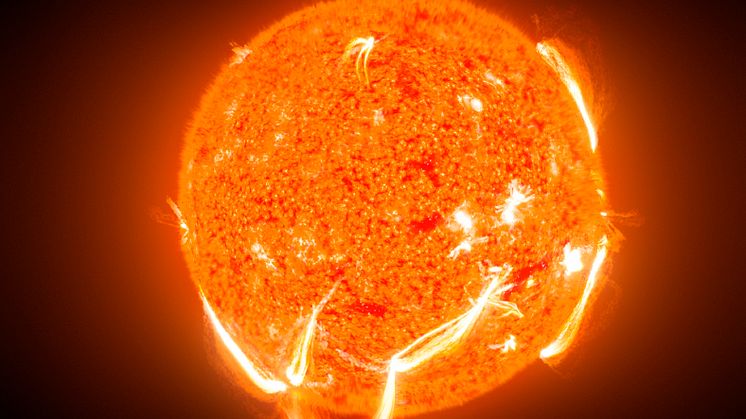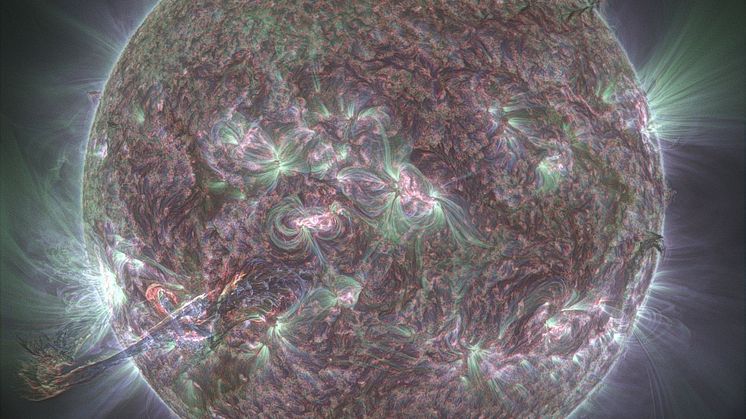
Press release -
Scientists to help forecast space weather threats
A Northumbria University solar physicist is part of a team of scientists working on a new project to improve the ability of the Met Office to forecast space weather and its potential disruption to activities on Earth.
Storms above the surface of the Sun can cause major damage to our economy, affecting satellites, radio communications, power grids and aircraft routes.
With advance warning, however, steps can be taken to minimise the impact of storms erupting from the Sun and hitting the Earth’s magnetic field.
The Met Office has had a unit dedicated to monitoring space weather since 2014 and is now looking to upgrade its capabilities.
A team of solar and space scientists, led by Aberystwyth University in collaboration with Northumbria, Durham, and Reading Universities has been commissioned to build an improved system for forecasting solar storms.
Dr Shaun Bloomfield, of Northumbria University's Department of Mathematics, Physics and Electrical Engineering, will lead Northumbria's involvement in the two-and-a-half-year project, called Space Weather Empirical Ensemble Package (SWEEP).
His role will be to score the space weather forecasts produced by project colleagues against the actual conditions to determine their accuracy and reliability.
This is an area Dr Bloomfield has extensive experience in, having carried out a similar role as Project Scientist in the EC Horizon 2020-funded FLARECAST project, which involved scientists from six countries developing a service to predict the occurrence of solar flares.
Speaking about his involvement in this new project, Dr Bloomfield said: “A major strength of the SWEEP project is that it isn’t focused on the space weather conditions only during quiet times or only during storms, but that there is a seamless transition from one situation to the other.
“This will help Met Office forecasters understand the longer-term outlook during quiet times as well as the shorter-term effects when conditions worsen due to solar activity.”
The SWEEP project is headed by Dr Huw Morgan, Head of Solar System Physics in the Department of Physics at Aberystwyth University.
He explained: “The Sun’s atmosphere flows into interplanetary space as the solar wind. Solar eruptions cause large variations in this flow that can cause huge disruption to society, especially given our increasing reliance on technology for everything from mobile phone communication to electricity supplies and spacecraft travel.
“The disruption caused by solar eruptions and flares can be reduced given advance warning of severe space weather. The main purpose of the SWEEP project therefore is to improve this warning system through more accurate and robust forecasting and help protect society from the threat of space weather.”
Simon Machin, Space Weather Programme Manager at the Met Office, added: “Understanding the characteristics of solar storms, improving our predictive capability and mitigating their impacts here on Earth, is critical to maintaining the function of many modern technologies on which we depend.
“We are very excited by the prospect of working with the SWEEP team to pull through UK scientific excellence into operational services that will deliver a step-change in our national capability.”
Violent flares and eruptions from the Sun’s atmosphere, or corona, can occur frequently - at times, several per day.
However, only a small number of these happen at the right time and place to impact Earth, and not all of these have an effect on our planet.
The frequency of storms follows the Sun's magnetic cycle, and tends to peak around every 11-12 years.
The strongest solar storm ever recorded was the Carrington Event in 1859 which took out the global telegraph system and created a worldwide aurora.
In 1989, Quebec in Canada lost all power due to a major solar storm and in 2003, there were numerous satellite problems during the so-called ‘Halloween Storms’.
The next period of intense solar activity is expected in 2023-2026.
The SWEEP project is the latest in a number of high-profile international research projects involving academics from Northumbria University’s Extreme Environments multidisciplinary research theme, which includes experts in solar physics and space weather such as Dr Bloomfield, as well cold and paleo environments.
Dr Bloomfield is also a member of Northumbria’s world-class Solar Physics research group, which uses mathematical techniques and cutting-edge computer simulations, as well as the latest high-resolution data from international ground-based and spaced-based instruments, to study dynamical events occurring in the solar atmosphere.
Both Northumbria groups also include Dr Richard Morton, who was recently awarded £1.2m through a prestigious 2020 UKRI Future Leader Fellowship for his project Revealing the Pattern of Solar Alfvénic Waves (RiPSAW); and Dr Patrick Antolin, who recently led a research team in proving a link between reconnection nanojets and the heating of the solar corona.
Topics
Categories
Northumbria is a research-rich, business-focused, professional university with a global reputation for academic excellence. Find out more about us at www.northumbria.ac.uk --- Please contact our Media and Communications team at media.communications@northumbria.ac.uk with any media enquiries or interview requests ---







